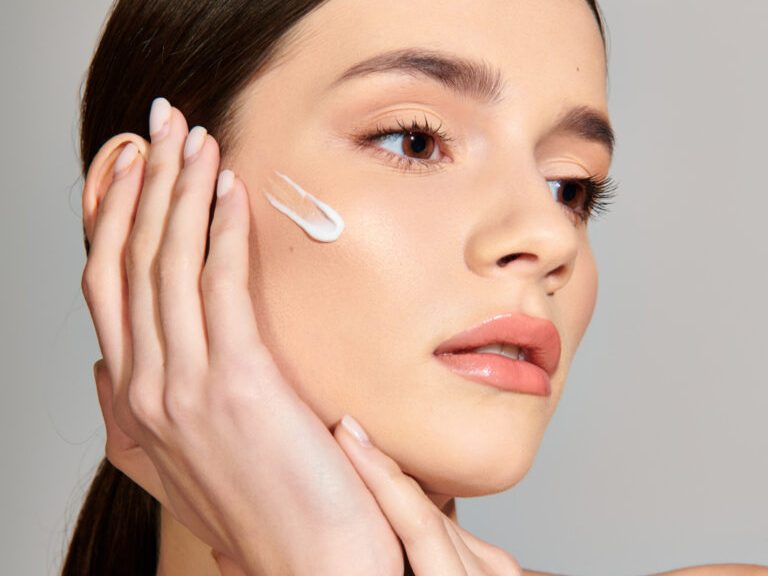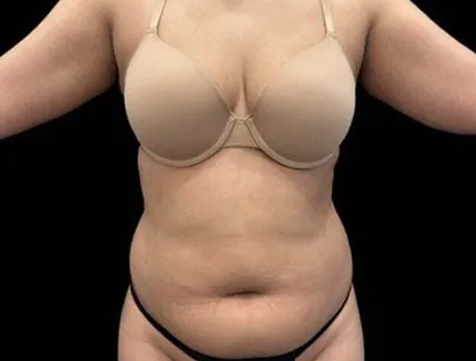Post-Operative

Dr. Sean Satey’s specialized services for post-op pain management likely involve a comprehensive approach to alleviate discomfort and promote healing following surgical procedures.
Contents
- 1 Post-Operative Pain Management
- 2 Surgical Infection Prevention
- 3 Surgical Garments
- 4 Regaining Sensation
- 5 Tummy Tuck Journey: Day Of Surgery And Recovery Process
- 6 Tummy Tuck Recovery
- 7 Liposculpting Journey: Day Of Surgery And Recovery Process
- 8 Liposculpting Recovery
- 9 Breast Augmentation Recovery
- 10 Minimize My Scarring Risk
- 11 Scars & Tattoos
- 12 Lymphatic Massage
- 13 FAQ
Post-Operative Pain Management
In my practice, I use a multi-modal approach for my post-operative pain ma nagement! This allows me to minimize the opioid requirement. This creates a snowball effect of faster recovery, decreased constipation, and more patient comfort!
My post-operative pain control starts intra-operatively! This starts with tumescent anesthesia- a numbing solution that is injected into the surgical fields. The other is Exparel- which is a long lasting numbing medication that can last up to 48 hours!
Post-operatively, I prescribe opioid medications to all of my patients. This is to take the edge off of the pain. My ultimate goal is to minimize this requirement! Opiates include Norco, Vicodin, Percocet, etc.
In the immediate post-operative period, please avoid NSAID medications. These include Aspirin, Alleve, Motrin, etc. These medications bind your platelets and inactive them, increasing your likelihood for oozing/bleeding. Instead, use things like Tylenol or Acetaminophen. But, remember, you shouldn’t exceed more than 3,000mg (or 3g) in a 24 hour period. This becomes important as most opiate medications have Tylenol mixed in. Doses greater that 3g in 24 hours have been found to be toxic to the liver.
I’m here to help make your post-op journey as easy as possible while helping you become the best version of you!
Surgical Infection Prevention
All surgical procedures involve incisions!
Now, the length of the incisions may vary from a poke hole liposuction incision to a larger incision for a tummy tuck.
Generally speaking, the sutures used to close the incisions are dissolvable. Overlying these incisions, we place either a surgical tape (steri-strip) or surgical glue (Dermabond) which serve as an additional layer of closure.
The key is to always make sure that you’re monitoring your incisions.
While you’re in my office and post-op visits, we do that for you. But, it’s always a good idea to do the same while you’re at home!
Remember, a CLEAN and DRY wound has a low likelihood of getting infected where as it’s DIRTY and WET counterparts doesn’t.
Surgical Garments
Surgical compression garments are categorized into two categories:
Stage/Phase 1 – loose fitting yet snug. The goal of the garment is to be tight enough to cause compression yet not too tight to kill off the blood supply of the overlying tissues. We also don’t want the skin to have indentations from the garment. Compression foams may be used during this time. This period is roughly 1-2 weeks.
Stage/Phase 2 – after the majority of the initial fluid is evacuated (via drains), the body is far less swollen, and can thus undergo tighter compression. This is worn for approximately 3 months.
We’ll go over your post-operative care in detail prior to your surgery!
Regaining Sensation
A huge determining factor is what kind of surgery are you planning to have?
Immediately after liposculpting, the surgical areas will be numb from the tumescent solution. This last about 24 to 48 hours. During this period, you want to make sure that you avoid any ice packs or heating pads to avoid any burns to the skin!
Procedure that involve larger incisions, such as abdominoplasties (tummy tucks) or breast lifts, will understandably require a longer period of time to regain sensation.
There is a wide spectrum for the sensation timeline- for some patients, it may take less than three months while it may take others six months to a year, and for some, the sensation over the incision line may never return (although a small subset of patients).
Tummy Tuck Journey: Day Of Surgery And Recovery Process
We start off by introducing you to our amazing team! Shortly thereafter, we begin our pre-operative markings. This is one of of the most important steps to any successful surgery. It becomes a roadmap for the operation! Once completed, we circumferentially prep your body with an antiseptic solution. This is designed to help minimize your risk of an infection, and kill off any bacteria that naturally lives on your skin. Two of the most commonly used solutions include Betadine and Chlorhexidine. Several safety monitoring devices and tools will then be utilized, and the Anesthesiologist will administer medications for you to go to sleep. The planned procedure then ensues!
As for the recovery period: prior to your date of surgery, we would have decided on your need for an aftercare facility! The role of an aftercare is to ensure your safety post-operatively. The facility employs nurses which help monitor your hemodynamic status, make sure you are comfortable, and allow for an easy transition home. Stays are typically 24 hours, or the night of surgery. Determinants of whether you will need an aftercare facility stay include how extensive your surgery is, age, availability of help at home, etc.
After your surgery, I HIGHLY encourage ambulation, albeit slowly. I want you to walk around the house, as tolerated – including the day of surgery – to help prevent the development of blood clots. If you live in a two story house, stairs are okay- just make sure you move slowly.
All of my tummy tuck patients will have two drains placed. This is to help collect fluid that may build up and to prevent the development of a seroma. They typically stay in for 2 weeks. Stay tuned for an amazing video on Drains, coming soon.
My routine follow up schedule after a tummy tuck surgery is on post operative day (POD) 1, POD 7, POD 14, 1 month, 3 months, 6 months, and 1 year. I always encourage my patients to come in and see me with any questions, or as needed in addition to the set dates!
Tummy Tuck Recovery
Recovery times vary from patient to patient.
But, on average, most patients are able to return to work at or around 2 weeks- without heavy lifting or strenuous activities! Remember- at the 2 week mark, your drains are also removed!
At 6 weeks, you essentially have no restrictions as 80% of your wound healing is complete.
At 3 months, you begin to see a major difference as the majority of the swelling subsides.
At 6 months, your body has 90% of healing complete.
The 1 year mark marks your new baseline!
Liposculpting Journey: Day Of Surgery And Recovery Process
We start our day with preoperative markings – one of the most important steps of a successful surgery. These become the blueprints to our amazing results. Once complete, we then go to the operative suite, where you comfortably undergo anesthesia and your body is cleaned with an antiseptic solution. The solution helps kill off any bacteria that naturally lives on your skin- which helps reduce the risk of an infection.
We then start the procedure with the infiltration of tumescent anesthesia. That’s merely fluids mixed with a numbing agent, and other proprietary medications that will allow for a successful surgery. Next, we thoroughly perform our VASER assisted liposculpting. We have a great video on this- so make sure you check that out.
At the conclusion of the procedure, we place two drains in the front, and one drain in the back- in well hidden areas! We also have an amazing video on drains- so make sure you check that out too!
And voila, you’ve become the best version of you.
Make sure to check out our other videos on compression garments and foam.
Liposculpting Recovery
The recovery timeline of liposculpting is actually pretty short.
You’ll be able to return to work in about 7 days post-operatively.
You will have limitations on what you can lift though! You want to restrict strenuous activities and heavy lifting for about 4 weeks!
Breast Augmentation Recovery
The recovery timeline is actually really short.
You’ll be able to return to work in about 7 days post-operatively. You will have limitations on what you can lift though!
You want to restrict strenuous activities and heavy lifting for about 6 weeks- that’s when your body has reached approximately 80% of its tensile strength!
Minimize My Scarring Risk
My goal is to always minimize your scars while maximizing your results. It’s noteworthy to mention that everyone scars differently- even siblings!
Fortunately, we have different tools that can help us minimize the scars:
- Experienced Cosmetic Surgeon
- High quality products (IE, sutures)
- Taking it easy after your surgery
- Avoiding the sun
- Use of topical scar management (IE, silicone gel and ointment)
- Energy based treatments (IE, lasers)
- Wound care teams
Scars & Tattoos
One of the most commonly asked questions I get is, “Can I get a tattoo over my scar?”
The answer is yes, BUT timing is everything.
I recommend waiting one year after your operation before committing to a tattoo.
This is because the remodeling phase of your incision can take up to one year. In addition during this period, you will also be applying topical scar agents to minimize the scarring of your incision line.
We will go over the after care of your incisions in great lengths!
Lymphatic Massage
Our bodies are very d ynamic. In addition to our arteries and veins, we have a complementing system called the “Lymphatic System.” It’s a system of tissues, vessels and organs that all work together to maintain your body’s fluid levels, maintain your immune function, and keep your blood circulating.
Your arteries and veins carry your oxygenated and deoxygenated blood, respectively. Your lymphatic system, on the other hand, carries lymph.
Lymph is a clear fluid that has proteins, waste, fat, and metabolized cells that are filtered through your lymph nodes. As the fluid flows through your lymphatic system, waste is removed and normal lymph is returned to circulation.
When there is a blockage to this system, you end up with swelling, or edema. When it comes to cosmetic surgery, your body sees this as an insult, or trauma, and floods the areas with pro-inflammatory markers. This then causes edema.
Lymphatic massages will thus- reduce edema (swelling), minimize scar tissue and fibrosis, decrease healing time, and increase patient comfort.
FAQ
How Can Post-Operative Pain Be Managed Effectively?
Post-operative pain can be managed effectively through a combination of medications, such as opioids, nonsteroidal anti-inflammatory drugs (NSAIDs), and local anesthetics, as well as non-pharmacological approaches like ice packs, elevation, and relaxation techniques. It’s important to follow your doctor’s recommendations for pain management closely.
What Are The Risks Of Inadequate Post-operative Pain Management?
Inadequate pain management after surgery can lead to prolonged recovery times, increased risk of complications such as infections or blood clots, and a poorer overall surgical outcome. Proper pain management is crucial for a comfortable and successful recovery.
How Can I Communicate My Pain Levels To My Healthcare Team?
It’s important to communicate openly and honestly with your healthcare team about your pain levels. You can use pain scales, such as the numeric rating scale (NRS) or visual analog scale (VAS), to describe your pain intensity






